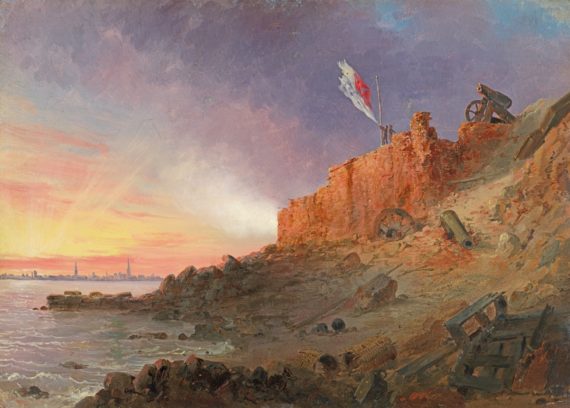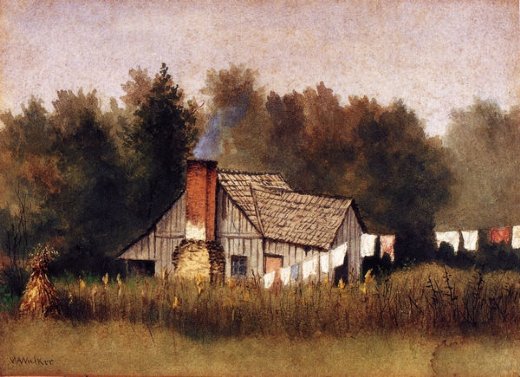Since I became a member of the Charleston Chapter 4 of the United Daughters of the Confederacy, I have had the honor of working as a volunteer at our museum in historic Charleston, South Carolina. One aspect of that work involved an inventory of the museum’s rich, remarkable treasure trove of manuscripts and printed material. Having authored a book some years ago about the Immortal 600, a group of Confederate POWS who endured extraordinarily cruel treatment, I was thrilled to discover among the manuscripts a notebook containing detailed information about all these men. Battered but intact, it was a record kept by one of the prisoners, who added a note that he had written it while sitting in the sand inside a stockade prison on Morris Island in Charleston harbor in 1864.
Among other exciting finds in the manuscript collection was a memoir written by Mrs. Jane E. Chichester, one of the founding members of the Charleston Chapter. Many Southern women wrote reminiscences about their lives during the War Between the States, but hers is an unusual one in that it does not concern experiences on the “home front,” but rather one woman’s remarkable wartime sojourn in two armed and garrisoned forts. Both Jane and her husband Charles E. Chichester were native Pennsylvanians, but they both strongly supported the Southern cause of independence, and shortly after South Carolina’s secession, he enthusiastically recruited men for a militia company, the Charleston Zouave Cadets. He became the captain of this company, which was assigned to garrison a small fort in Charleston harbor called Castle Pinckney.
In the fall of 1861, Mrs. Chichester went to live at the Castle, bringing a maid along with her, and they first resided outside the fort in a small wooden building which had once been used as a hospital. Later, Mrs. Chichester moved into her husband’s quarters in the fort, which included a bedroom, kitchen, dining room, and office.
In September 1861, about 160 prisoners of war were sent to the Castle, which had been fitted up as a military prison. Mrs. Chichester made interesting observations about these men, and about the great fire that devoured much of Charleston on December 11, 1861, which she anxiously watched from the fort. The Zouave Cadets ended their garrison duty at Castle Pinckney in March 1862, and after they disbanded, Mrs. Chichester’s husband assumed command of the Gist Guard, a heavy artillery unit which would become one of the two artillery companies forming the garrison of Battery Wagner on Morris Island. Captain Chichester was an able, devoted officer, and his health suffered from the strain of his command and constant exposure on the island.
General G. T. Beauregard, one of the Confederate commanders at Charleston, described the defense of Fort Sumter and Battery Wagner as “feats of war unsurpassed in ancient or modern times.” Captain Chichester served many months at Battery Wagner, where he and his men endured numerous periods of intense enemy assaults and bombardments by both land and sea during the siege of Charleston—the longest siege of the War Between the States.
While her husband continued his military service, Mrs. Chichester was busy managing their plantation in Colleton District about fifty miles from Charleston, but in June 1863, she visited with him for about ten days at Battery Wagner so that they could spend their wedding anniversary together. During her stay at Wagner, Mrs. Chichester watched the men under her husband’s command hauling immense amounts of sand to repair and build up the defenses of the battery. She wrote of this:
When the planters withdrew their slaves that had been working gratuitously on the fort, on account of the threatening appearance of affairs in the front, and the authorities neglected or failed to send down hired laborers, there still remained some unfinished work in Battery Wagner that it was essential should be done before hostilities commenced. A portion of the principal bombproof that was intended as a shelter for the infantry at such times as the fort should be subjected to heavy mortar shelling, was not entirely covered with sand and as the timbers were exposed to the shells, they would be split and splintered in such a manner as to do great injury to any troops seeking shelter beneath them. There was also a large amount of unfinished work on a new and heavy earth work on the south end of the island, which, if it had been completed, would have made it impossible for the enemy to make a lodgment there.
In this emergency, orders came from Headquarters that a certain number of men should be detached each day to perform this labor. Accordingly twenty artillerists in Battery Wagner, ten from each company, were ordered out every morning to work on the battery under charge of the officer of the day, and two hundred of the infantry, under their respective officers, to work at the south end of the island. In Battery Wagner, “runs” were built, loading from the front beach up to the parapet of the fort on the outside, and along to the top of the bombproof. Five men had shovels to fill the wheelbarrows and five shoved the barrows up the “runs,” emptied them, and returned to the beach to have them refilled. These ten worked one hour and then the other ten relieved them for an hour. It was heavy and tiresome work, especially under the broiling summer sun, and some of the men demurred and grumbled at having to perform such labor.
Some of Captain Chichester’s men became so resentful of these exhausting labors that they were close to a state of mutiny. One of the lieutenants told him that “they vowed that the first fight they got into, the captain would be the first man shot.” Mrs. Chichester noted that their attitude would change dramatically, however, when Wagner saw its first major enemy assault on the 10th of July. She wrote:
By the evening of the 9th of July, the work in Battery Wagner was practically finished, there being but a few more loads of sand required. When the attack was made early on the 10th, these “runs” were hastily knocked away and the planks thrown to one side, all the artillerists being ordered to their guns. In a short time the troops from the south end of the island, having been taken by surprise, soon became demoralized and began a hasty retreat toward the north end. The federals followed them rapidly. The unfinished works proving no obstruction to them. When the artillerists in the fort saw the panic stricken infantrymen coming and counteracted it with their own strict obedience to the orders given, and especially after they had opened fire upon the advancing line of federals, not only stopping their progress but causing them to turn and run back beyond the range of their heavy guns, which they loaded and fired with all the deliberation and calmness that they were accustomed to do when only drilling. They were filled with enthusiasm and fully realized the value of the strict discipline they had endured so long, especially their perfect obedience to every command given. After this their first fight was over the same lieutenant came to my husband and said smilingly, in language more forcible than elegant, “Captain, the men say they’d go to h— (Hades) for you!”
The Confederate Museum at Market Hall in Charleston will celebrate its 125th anniversary in 2024. Founded in 1899 by the Charleston Chapter, U.D.C., it houses a wonderful collection of artifacts and artwork, and in the past few years, has added to its exhibits a number of beautiful, newly restored flags which had previously been in storage for decades.
The museum recently published Mrs. Chichester’s two-part memoir as A Lady’s Experience inside the Forts in Charleston Harbor during the War. It is available only at the museum’s gift shop or online store, and its sales will help fund the organization’s important mission of preserving the history and heritage of the men and women of the Confederacy.







Thank you.
Preserving these first hand accounts of the conflicit, especially written by Southern women are incredibly important.
Well done.
Nice story, thanks. Really enjoyed Ms. Stokes’ book om the Immortal 600. May we all live our lives half as well as those brave men.